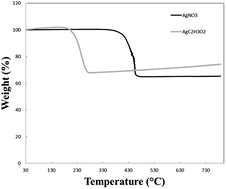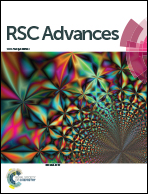High-power current and fatigue sustainable circuits prepared using low-temperature spray pyrolyzed submicron silver particles
Abstract
Silver acetate instead of silver nitrate was used as the precursor to synthesize submicron-sized Ag particles (Ag SMPs) using a thermal-spray pyrolysis method at relatively low processing temperatures. Pastes comprised of Ag particles were produced and sintered at 100 °C or 250 °C to form conductive circuits for different-level microelectronics. The produced circuits were designed for application as interconnections in consumer and automotive devices. The critical current necessary to fuse the circuit was measured to evaluate the interconnect reliability under high-power electrical current stress. The experimental results show that a critical calcination temperature exists between 350 to 400 °C for full silver acetate conversion into Ag powders. The amount of residual precursor, morphology, constituent and size of the Ag particles, as well as the electrical conductance of the sintered structures are all influencing factors. When subjected to heating at 100 °C for 10 min, the sintered conductive Ag SMP lines can withstand current stress density exceeding 1 mA μm−2 under 12 V, indicating superior electrical reliability. The low-temperature sintered SMP deposits also demonstrated excellent bending fatigue resistance.



 Please wait while we load your content...
Please wait while we load your content...